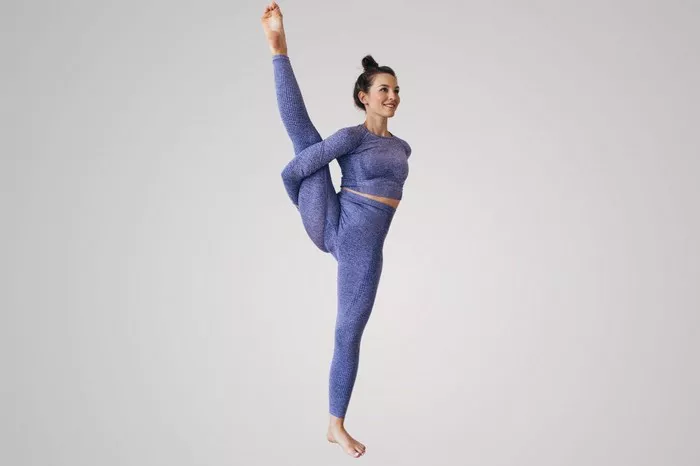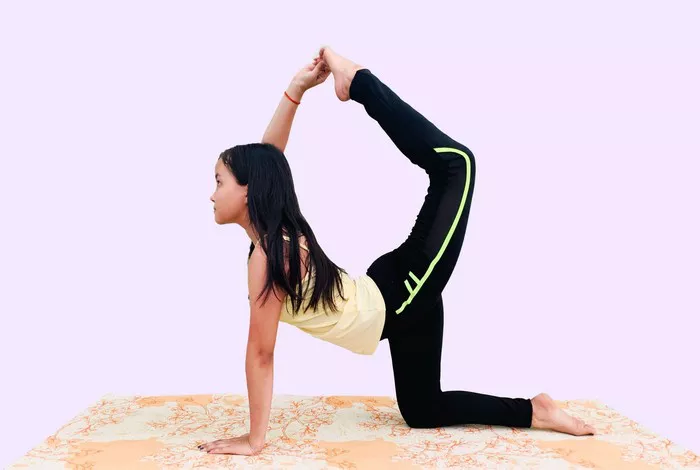In the ever-evolving world of wellness, yoga continues to expand and diversify, offering numerous styles to suit varying needs and preferences. One such style that has been gaining traction is Somatic Yoga. This unique practice merges principles of somatic movement with traditional yoga postures, focusing on mindful awareness and internal sensations to promote healing, flexibility, and a deep sense of body-mind connection. This article delves into the essence of Somatic Yoga, exploring its origins, principles, benefits, and how it can be integrated into daily practice.
Understanding Somatic Yoga
Somatic Yoga is a holistic practice that combines elements of somatic movement and traditional yoga. The term “somatic” is derived from the Greek word “soma,” which means “body.” In this context, somatics refers to a field of study that emphasizes internal physical perception and experience. Unlike other forms of exercise that may prioritize external performance or aesthetics, somatic practices focus on the internal experience of movement and the body’s sensations.
Somatic Yoga incorporates slow, mindful movements that encourage practitioners to explore their physical sensations, release tension, and develop a deeper awareness of their bodies. This practice is less about achieving perfect postures and more about cultivating a sense of ease, balance, and harmony within the body.
The Origins of Somatic Yoga
Somatic Yoga draws from various somatic traditions and the principles of Hatha Yoga. It has been influenced by the work of several pioneers in the field of somatics, including Thomas Hanna, Moshe Feldenkrais, and Bonnie Bainbridge Cohen.
Thomas Hanna and Hanna Somatics
Thomas Hanna, a philosopher and movement educator, developed Hanna Somatics in the 1970s. His work focused on addressing chronic pain and movement limitations through slow, mindful movements and sensory awareness. Hanna believed that many physical ailments were the result of “sensory-motor amnesia,” a condition where the brain loses the ability to control certain muscles due to habitual patterns of tension and stress. Hanna Somatics aimed to re-educate the nervous system, restore movement, and alleviate pain.
Moshe Feldenkrais and the Feldenkrais Method
Moshe Feldenkrais, an engineer and physicist, created the Feldenkrais Method in the mid-20th century. This method emphasizes gentle, exploratory movements to improve physical function and overall well-being. Feldenkrais believed that awareness through movement could enhance the body’s ability to heal and perform optimally. His method focuses on increasing awareness of habitual movement patterns and expanding the range of movement possibilities.
Bonnie Bainbridge Cohen and Body-Mind Centering
Bonnie Bainbridge Cohen, a dancer and occupational therapist, founded Body-Mind Centering (BMC) in the 1970s. BMC is an approach to movement and consciousness that explores the relationship between body systems (such as muscles, bones, organs, and fluids) and the mind. Cohen’s work emphasizes experiential anatomy and the embodiment of movement principles to promote health and well-being.
Principles of Somatic Yoga
Somatic Yoga integrates the principles of somatic movement with traditional yoga postures to create a mindful, therapeutic practice. Key principles of Somatic Yoga include:
1. Mindful Awareness
Mindful awareness is at the core of Somatic Yoga. Practitioners are encouraged to pay close attention to their internal sensations, thoughts, and emotions as they move through each posture. This heightened awareness helps to uncover and release patterns of tension and stress stored in the body.
2. Slow, Gentle Movements
Somatic Yoga prioritizes slow, gentle movements over vigorous, dynamic flows. This approach allows practitioners to move within their comfort zone, reducing the risk of injury and promoting a sense of ease and relaxation.
3. Sensory Exploration
Sensory exploration involves tuning into the body’s sensations and using them as a guide for movement. Practitioners are encouraged to explore different qualities of movement, such as lightness, heaviness, expansion, and contraction, to develop a deeper understanding of their bodies.
4. Breath Awareness
Breath awareness is integral to Somatic Yoga. Practitioners are guided to observe their breath and synchronize it with their movements. This connection between breath and movement helps to enhance relaxation, focus, and overall well-being.
5. Non-Judgmental Attitude
Somatic Yoga encourages a non-judgmental attitude towards the body and its abilities. Practitioners are invited to let go of expectations and self-criticism, embracing their unique experience and progress without comparison or judgment.
Benefits of Somatic Yoga
Somatic Yoga offers a wide range of physical, mental, and emotional benefits. These include:
1. Improved Body Awareness
By focusing on internal sensations, Somatic Yoga helps practitioners develop a heightened awareness of their bodies. This increased body awareness can lead to better posture, coordination, and overall physical function.
2. Reduced Pain and Tension
Somatic Yoga’s gentle, mindful movements can help release chronic tension and alleviate pain. By re-educating the nervous system and addressing habitual patterns of tension, practitioners can experience greater ease and comfort in their bodies.
3. Enhanced Flexibility and Mobility
The slow, exploratory movements of Somatic Yoga can improve flexibility and mobility by encouraging the body to move through a full range of motion. This practice can help to maintain or restore functional movement, making everyday activities easier and more enjoyable.
4. Stress Reduction
Somatic Yoga promotes relaxation and stress reduction through mindful awareness and breath control. By focusing on the present moment and cultivating a sense of ease, practitioners can reduce stress and anxiety, promoting overall mental and emotional well-being.
5. Better Mental Clarity and Focus
The mindful nature of Somatic Yoga can enhance mental clarity and focus. By bringing attention to the body and breath, practitioners can quiet the mind and develop greater concentration and awareness.
6. Emotional Healing
Somatic Yoga can support emotional healing by helping practitioners connect with and release stored emotions in the body. This practice encourages a deeper understanding of the mind-body connection and can facilitate emotional processing and integration.
Somatic Yoga Practices
Somatic Yoga encompasses a variety of practices that can be tailored to individual needs and preferences. Some common Somatic Yoga practices include:
1. Gentle Somatic Movements
Gentle somatic movements are the foundation of Somatic Yoga. These movements are typically slow, subtle, and exploratory, focusing on increasing awareness and releasing tension. Examples include gentle rocking, rolling, and spiraling movements.
2. Somatic Breathwork
Somatic breathwork involves bringing mindful awareness to the breath and using it to enhance relaxation and movement. Practices may include deep diaphragmatic breathing, lengthening the exhalation, and coordinating breath with movement.
3. Somatic Yoga Poses
Somatic Yoga poses are traditional yoga postures performed with a somatic approach. This means moving slowly, mindfully, and within a comfortable range of motion. Common poses include gentle twists, forward bends, and restorative poses.
4. Guided Somatic Meditation
Guided somatic meditation involves using verbal cues to guide practitioners’ attention to different parts of the body and their sensations. This practice can help deepen body awareness and promote relaxation.
5. Somatic Movement Sequences
Somatic movement sequences are flowing sequences of movements designed to explore different qualities of movement and enhance body awareness. These sequences can be customized to address specific needs, such as improving posture, releasing tension, or increasing flexibility.
How to Practice Somatic Yoga
Somatic Yoga can be practiced by individuals of all ages and abilities. Here are some tips for getting started:
1. Find a Qualified Instructor
Working with a qualified Somatic Yoga instructor can help you learn the principles and practices of Somatic Yoga safely and effectively. Look for instructors with training and experience in somatic movement and yoga.
2. Create a Comfortable Practice Space
Set up a comfortable and quiet space for your practice. Use props such as yoga mats, blankets, and cushions to support your body and enhance relaxation.
3. Start Slowly
Begin with short, gentle sessions and gradually increase the duration and intensity of your practice as you become more comfortable and familiar with the movements.
4. Listen to Your Body
Pay close attention to your body’s sensations and let them guide your movements. Avoid pushing beyond your comfort zone and honor your body’s limits.
5. Integrate Breath and Movement
Synchronize your breath with your movements to enhance relaxation and focus. Experiment with different breathing techniques to find what works best for you.
6. Practice Mindful Awareness
Cultivate mindful awareness by focusing on the present moment and observing your sensations, thoughts, and emotions without judgment. This practice can help deepen your connection to your body and enhance the benefits of Somatic Yoga.
Somatic Yoga for Specific Conditions
Somatic Yoga can be particularly beneficial for individuals with specific conditions or needs. Here are some examples:
1. Chronic Pain
Somatic Yoga can help alleviate chronic pain by addressing habitual patterns of tension and promoting relaxation. The gentle movements and mindful awareness can help re-educate the nervous system and restore ease of movement.
2. Stress and Anxiety
The relaxation and mindfulness components of Somatic Yoga make it an effective practice for reducing stress and anxiety. By focusing on the present moment and connecting with the body, practitioners can calm the mind and enhance emotional well-being.
3. Trauma and Emotional Healing
Somatic Yoga can support trauma recovery and emotional healing by helping practitioners connect with and release stored emotions in the body. This practice can promote a sense of safety, grounding, and empowerment.
4. Aging and Mobility
Somatic Yoga is well-suited for older adults and individuals with limited mobility. The gentle, slow movements can help maintain or improve flexibility, balance, and overall physical function.
5. Posture and Alignment
By increasing body awareness and addressing habitual movement patterns, Somatic Yoga can improve posture and alignment. This practice can help alleviate discomfort and enhance overall physical well-being.
See Also: What Is Kriya Yoga
Integrating Somatic Yoga into Daily Life
Somatic Yoga is not limited to formal practice sessions; its principles can be integrated into daily life to enhance overall well-being. Here are some ways to incorporate Somatic Yoga into your routine:
1. Mindful Movement Breaks
Take short breaks throughout the day to practice mindful movement. Simple activities like stretching, gentle twisting, or walking with awareness can help release tension and improve focus.
2. Breath Awareness
Integrate breath awareness into your daily activities. Pay attention to your breath while sitting, walking, or engaging in routine tasks. This practice can help reduce stress and enhance relaxation.
3. Body Scans
Perform body scans to check in with your body and observe any areas of tension or discomfort. This practice can help you develop greater body awareness and address physical needs as they arise.
4. Mindful Transitions
Practice mindful transitions between activities. Move slowly and with awareness as you transition from one task to another, paying attention to your body and breath.
5. Restorative Practices
Incorporate restorative practices into your daily routine, such as gentle stretching, relaxation poses, or guided meditation. These practices can promote relaxation and rejuvenation.
Conclusion
Somatic Yoga offers a unique and holistic approach to wellness that emphasizes mindful awareness, gentle movement, and the deep connection between body and mind. By exploring the principles and practices of Somatic Yoga, individuals can enhance their physical, mental, and emotional well-being. Whether you are looking to alleviate pain, reduce stress, improve flexibility, or cultivate a deeper sense of self-awareness, Somatic Yoga provides a nurturing and effective path to overall health and harmony. By integrating Somatic Yoga into your daily life, you can experience the transformative power of mindful movement and discover a greater sense of ease, balance, and vitality in your body and mind.
Related topics:

















